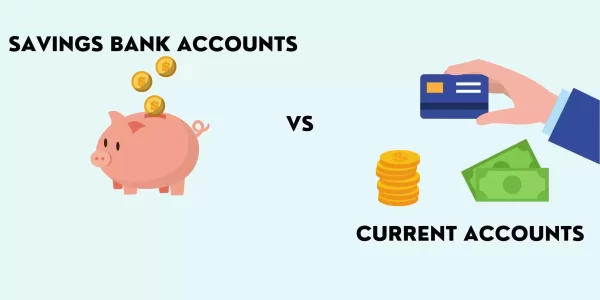When it comes to managing your money, there are several types of bank accounts to choose from. Two common types are current accounts and savings accounts. Although both accounts allow you to store your money with a bank, there are some key differences that set them apart.
What is a current account?
A current account is a type of account that allows you to withdraw and deposit money as often as you like. This account is ideal for people who need to make regular transactions, such as paying bills, making purchases, making vender payments or making salary payments. Most current accounts come with a debit card and online banking facilities, allowing you to access your money whenever and wherever you need it.
Some benefits of having a current account include:
- Overdraft facility: A current account allows you to overdraw your account up to a certain limit. This can be helpful in case of an emergency or unexpected expense.
- Cheque book: Current accounts come with a cheque book, which can be used for various transactions.
- Online banking: Most banks offer online banking facilities for current account holders, which allow you to access your account, make transactions, and manage your finances from anywhere.
- Debit card: Current accounts also come with a debit card, which can be used to withdraw cash from ATMs, make online or in-store purchases, and perform other transactions.
What is a savings account?
A savings account is a type of account that allows you to save your money while earning interest on your balance. Unlike a current account, you can’t usually make regular transactions from a savings account. Instead, you will need to transfer money to a current account to access it.
Some of the benefits of having a savings account include:
- Interest: Savings accounts offer interest on the balance in the account, which can help your money grow over time.
- No overdraft facility: Unlike current accounts, savings accounts do not offer an overdraft facility, which means you cannot overdraw your account.
- Limited transactions: Savings accounts limit the number of transactions you can make monthly. This is usually around 6-8 transactions.
- Online banking: Most banks offer online banking facilities for savings account holders, which allow you to access your account, make transactions, and manage your finances from anywhere.
Current account vs. savings account: Key differences
| Current account | Savings account | |
| Purpose | For day-to-day business transactions of large volume; mainly for businesses and entrepreneurs | For saving money and expenditures on a periodic basis and of a much lower volume; for salaried and non-salaried professionals |
| Interest rate | No interest | Interest is paid on this account |
| Withdrawals | Unlimited withdrawals | Limited withdrawals |
| Fees | May have fees for transactions, overdrafts, etc. | May have fees for falling below the minimum balance or excessive withdrawals |
| Minimum balance | Some current accounts require a minimum balance | Some savings accounts require a minimum balance |
Conclusion
Current and savings accounts have benefits, and the right choice depends on your financial needs. Consider the purpose, fees, withdrawal restrictions, and current account benefits as well as savings account benefits, before choosing one. You can manage your money effectively and achieve your financial goals with the right account.

